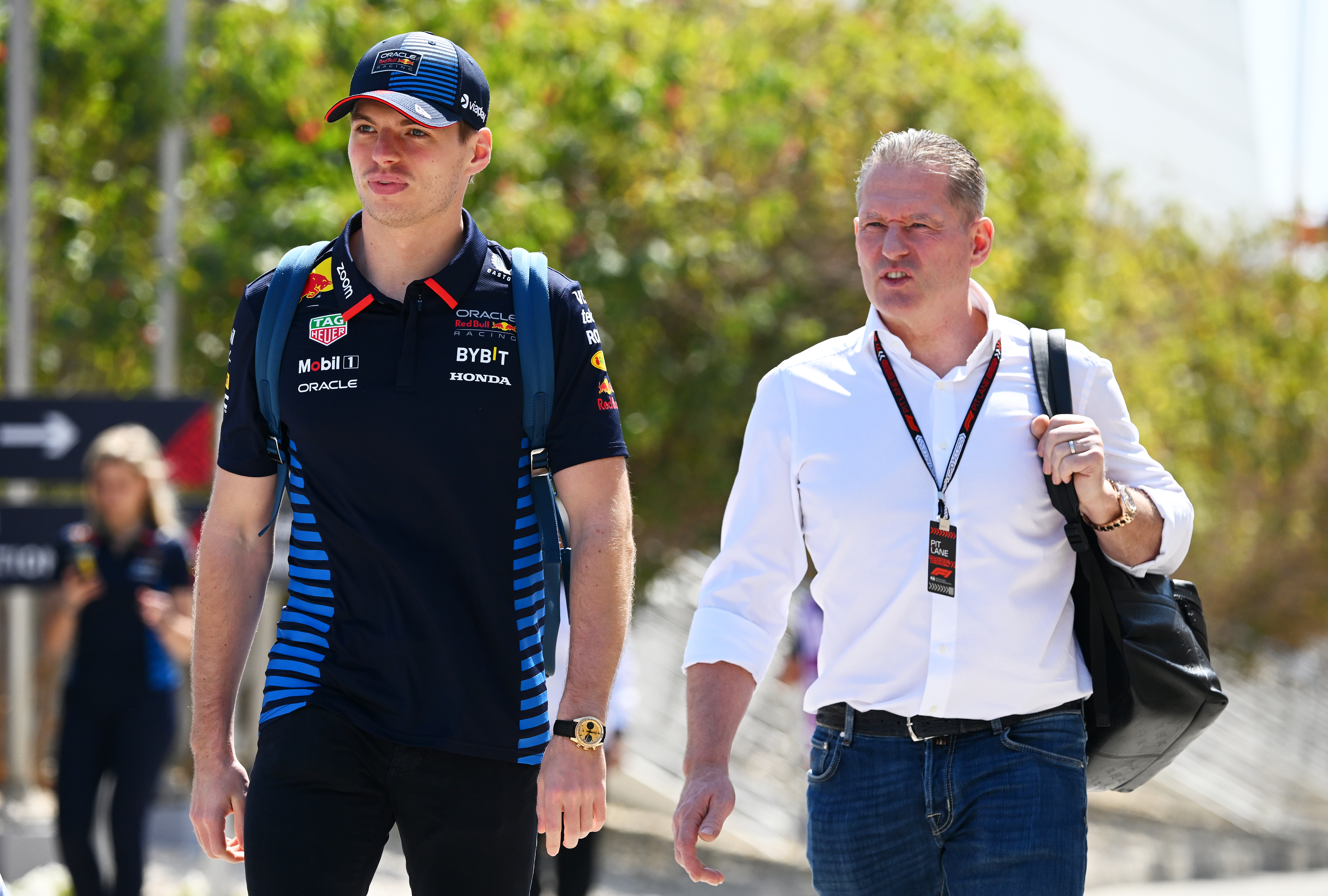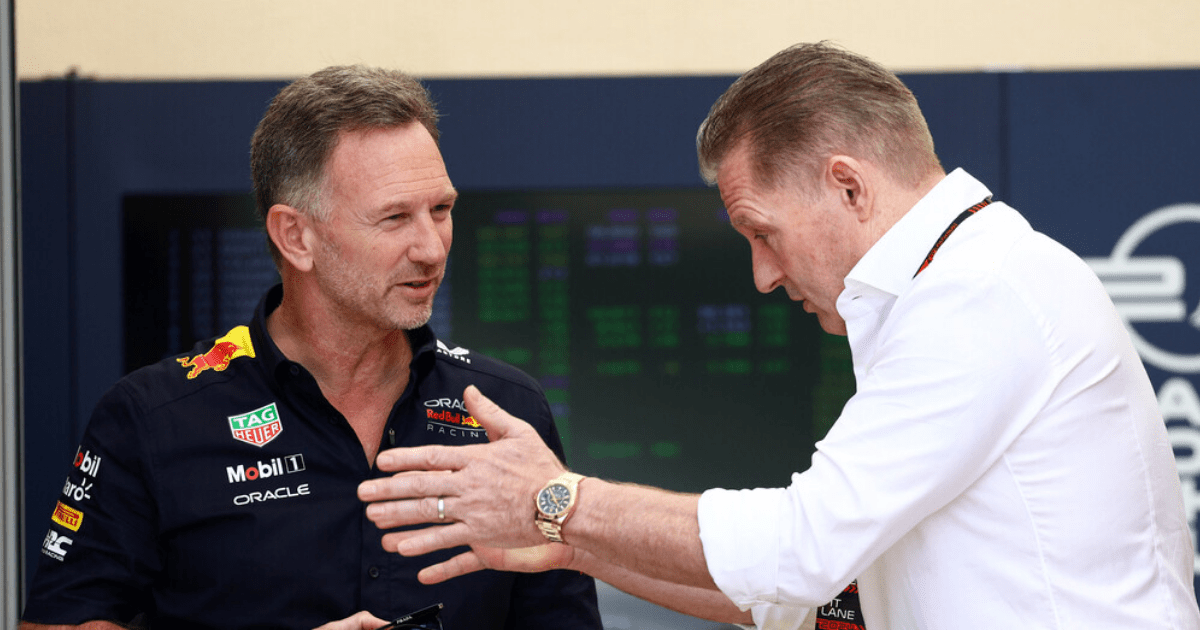Face-to-Face Meeting in Dubai
Christian Horner, the chief of Red Bull Racing, sat down with Max Verstappen's representative in Dubai on Monday in an effort to ease the escalating tensions within the F1 team.
Crucial Talks After Heated Exchange
The crisis discussions took place just two days after Max Verstappen's father, Jos, warned that Red Bull would face consequences if Horner continued in his role as team principal.
Verstappen Senior's Comments
After Max's victory at the Bahrain Grand Prix, Jos Verstappen implied that Horner should step down from his position, stating that the team was at risk of falling apart with Horner in charge.
Positive Outcome of the Summit
Despite the tensions, sources reported that the face-to-face meeting between Horner and Max Verstappen's camp, including key Red Bull figures, went smoothly.

Horner's Recent Controversies
Horner has been under scrutiny due to allegations of inappropriate behavior, which were later dismissed after an internal investigation by Red Bull.
Future Outlook
Following the Bahrain Grand Prix, Horner expressed confidence in remaining as Red Bull boss for the rest of the season, emphasizing team unity and focus on racing.
Response from Red Bull Racing
In response to Jos Verstappen's remarks, a spokesperson from Red Bull Racing affirmed that there are no internal issues and that the team is united and concentrated on upcoming races.
Next Stop: Saudi Arabia Grand Prix
The next race on the F1 calendar is set to take place in Saudi Arabia on Saturday, where the Red Bull Racing team will look to continue their strong performance.
Frequently Asked Questions
What is the purpose of the halo device introduced in Formula 1?
The halo device is a safety feature introduced in Formula 1 to protect the driver’s head from debris and impacts. It’s a titanium structure above the cockpit that can withstand major forces. It has been credited to saving lives in numerous incidents and preventing serious injury. The halo was incorporated into the design of modern Formula 1 cars to demonstrate their commitment to driver’s safety.
What has been the progress made in tire technologies for Formula 1 cars?
Formula 1 tire design has changed significantly. New developments have focused on compound, construction, as well as performance. Tire compounds can be developed to fit different track temperatures, conditions and strategies. Construction of tires has been improved to improve strength, durability, lateral grip, and durability. Also, new tread patterns, contact surfaces, and other improvements are aimed to optimize the performance of tires across the race course, while balancing wear and degradation.
What are the ways in which F1 racing strategies are influenced by technology?
F1 racing strategies are heavily reliant on technology, including real-time data analytics, predictive modeling and simulation. Teams analyze a vast range of data, from tire performance metrics to weather predictions, to inform strategic decisions on pit stops, tire choices, and fuel management. Advanced software can simulate different race scenarios, and then teams can adapt their race strategies to match the current race conditions.
Can you explain the braking systems that are used in Formula 1?
Formula 1 vehicles have advanced brake systems consisting of carbon fibre discs and pad, coupled with sophisticated hydrostatic systems for optimal stopping. These components can withstand extremely high temperatures and provide responsive braking. Brake-bywire systems in the rear provide fine-tuned electronic controls of brake force distribution. They help stabilize the car when decelerating and assist with the regeneration of energy.
Can you explain the use of telemetry by Formula 1?
Telemetry in Formula 1 is a sophisticated system that transmits real-time data from the cars to the engineers on the pit wall and back at the team headquarters. This data includes information on the engine, brakes, tires, fuel levels, and driver inputs. Engineers use the telemetry system to monitor and analyze car performance. They also make strategic decisions and identify issues before they are critical. Telemetry is essential for maximizing the performance of the car and driver throughout a race weekend.
What is the common material used in Formula 1 cars to build their chassis?
Carbon fiber composites are the main material used to construct Formula 1 cars. The material is preferred for its strength-toweight ratio. It offers exceptional rigidity and low weight. Aluminum and titanium can also be used as specific components. Advanced materials and honeycomb structures, however, are added to enhance structural efficiency.
How important is aerodynamics in Formula 1?
Aerodynamics are critical in Formula 1 as they affect the performance and handling of the race cars. The cars have been designed to produce downforce by using bodywork and wings. This forces the car onto track, increasing grip and cornering speed. Factors such as drag reduction are also crucial for maximizing straight-line speeds. Aerodynamics dictates the balance of downforce and aerodynamic drag. This results in complex designs with ongoing development through out the racing season.
Statistics
- A typical Formula 1 car’s brake discs can reach temperatures of over 1,000 degrees Celsius during heavy braking.
- Formula 1 engines can rev up to 15,000 RPM, a decrease from the 18,000 RPM limit set prior to the 2014 regulation changes.
- Formula 1’s research into sustainable fuel aims to create a 100% sustainable fuel for use in F1 engines by the mid-2020s.
- The energy recovery system (ERS) in modern Formula 1 cars can provide up to 161 horsepower of additional power for approximately 33 seconds per lap.
- In 2021, Formula 1 announced its plan to have a net-zero carbon footprint by 2030, which includes the cars, on-track activities, and the rest of the operations.
- Formula 1 cars can achieve lateral acceleration in excess of 5 g during cornering, which is about five times the force of gravity.
- Formula 1 tires lose weight during a race due to wear and degradation, with up to 0.5 kg shed from each tire.
- Computational fluid dynamics simulations are capable of calculating around 300 million mesh points to simulate airflow around a Formula 1 car.
External Links
renaultsport.com
mercedesamgf1.com
pirelli.com
formula1.com
f1chronicle.com
motorsport.com
racecar-engineering.com
formula1.com
How To
How to Appreciate F1 Power Units
To appreciate the engineering of the Formula 1 power unit, you must understand its components: internal combustion engine (ICE), Turbochargers, MGUK, MGUH, and Energy Store. The ICE engine is a hybrid engine that is highly efficient and designed for both performance and energy recuperation. Investigate how these components cooperate to produce power and how energy recovery systems enhance efficiency. Familiarize yourself with the current regulations that guide power unit development to appreciate the innovation in Formula 1 engineering.

